Posts Categorized: Publications
-
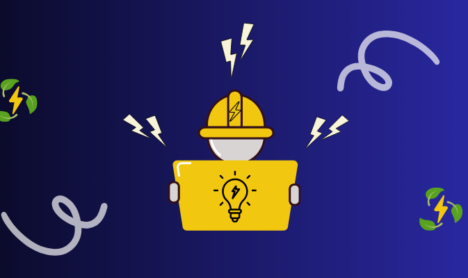
Navigating Uncertainty: Staying Motivated and Inspired by the Growth of Energy Work
by Aileen Villa
“Uncertainty” is probably the single word that I’ve been hearing the most these days in the weeks after the 2024 presidential election. I hear it on work calls about strategy and attempts to set expectations in the energy industry, from concerned small business owners, on phone calls and hangouts with friends, and while having meals with family. Yet, it always resonates.
It helps to be active in my communities and keep my mind occupied with other tasks like reading speculative fiction, though it’s also helped to focus my attention on other maybe seemingly small wins (that I know will have a huge impact!).
-
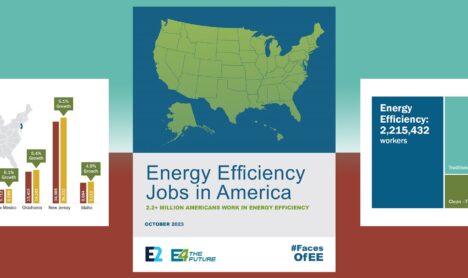
The U.S. Energy Efficiency Workforce: Deep-Dive Annual Insights
by Pat Stanton
I’m proud of my team’s work on our seventh annual energy efficiency (EE) jobs report. Energy Efficiency Jobs in America in 2023 shows 2.2+ million efficiency workers, a number expected to grow annually with new workforce development and training happening across the country. This report focuses on the specially trained builders, electricians and other skilled professionals who focus on making our buildings, appliances, factories and infrastructure run on less energy.
Providing access to consistently-presented EE workforce statistics at regular intervals during this crucial time serves as a key baseline for comparison, as public and private sector infrastructure investments continue to rise.
-

Unparalleled Opportunities Arise for Energy Efficiency Job Growth: Report
by Pat Stanton
Energy efficiency (EE) initiatives are needing increased attention with new federal funds. This translates into more jobs on the way. Energy Efficiency Jobs in America shows there are nearly 2.2 million efficiency workers, and the number will rise as infrastructure investments kick in this year. Making these workforce statistics available now is important, so that we have a baseline for comparison.
-
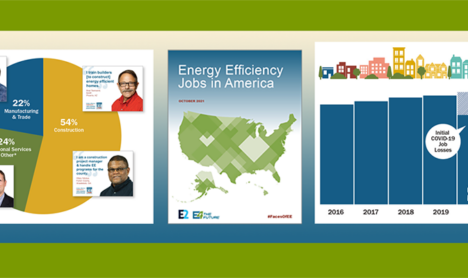
Energy Efficiency Jobs in America 2021: The Power to Tackle Our Thorniest Issues
by Steve Cowell
Energy Efficiency Jobs in America explores the workforce that comprises the largest part of U.S. energy sector employment. It also shows how energy efficiency has the breadth and depth to tackle our thorniest issues. Efficiency holds the promise of solutions for climate, equity, and economy.
Energy efficiency businesses across the country were gutted by the pandemic. They continue to be impacted by economic and workforce challenges. Yet day after day, efficiency workers — who are unsung heroes — rise to give their best effort. Read More
-
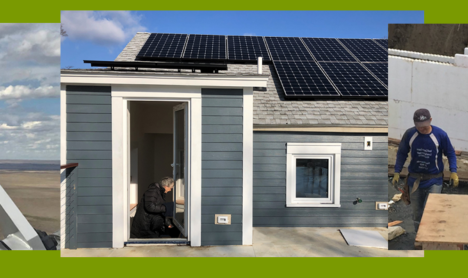
How Can We Better Account for Economic Development in Benefit-Cost Analysis?
by Shayna Fidler, Julie Michals, and Devin Hubbard
Recent news headlines are dominated by stories of growing investments in distributed energy resources (DERs). “Utility to Jump Start EV Charging Infrastructure,” “Flexible DERs to Replace Natural Gas Peakers,” and “Doubling Down on Energy Efficiency to Fight Climate Change” are becoming common topics. As the shift to a cleaner, more flexible electric grid expands in the US, the connection between investing in DERs and the associated economic development impacts is critical to building a competitive and sustainable clean energy industry.
-
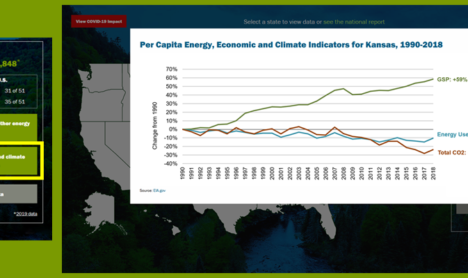
Energy Independence in a New Light: Economy Grows, Yet Uses Less Energy
by Pat Stanton
Throughout the 19th and 20th centuries, conventional wisdom equated economic growth with a rise in energy use, across the board. An examination of trends over the past three decades, proves that the correlation is no longer valid.
A Synapse Energy Economics analysis of data from the Energy Information Agency (EIA) recently commissioned by E4TheFuture compares per capita economic growth, energy use and CO2 emissions nationally, and for each state and the District of Columbia.
Read More -

State-Level Policy Choices Matter (a lot!) for Climate
by Steve Cowell
At this moment federal leadership changes are center stage, and may likely bode well for U.S. action on climate. Yet I want to focus beyond national news, calling your attention to a simple fact: States and cities need to remain at the forefront of implementing climate solutions.
Think of it as a “both/and” approach: Policy choices and implementation decisions by state officials as well as city leaders will help to move us forward, and can complement and execute positive federal legislation while administering programs. For meaningful U.S. progress on climate change, cooperation by and within states must be prioritized. Read More
-
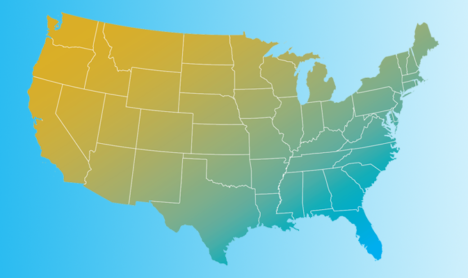
Rebuilding the Energy Efficiency Workforce
by Steve Cowell
“A year like no other.” Say it anywhere, and you see nods of agreement. In moments of solidarity you can muster a rueful half-smile. We all know that the impacts of 2020 on people’s lives are profound. What about energy efficiency professionals specifically? This community of workers is very much on my mind.
Read More -

Three Reasons the Secret’s Out about EE Jobs
by Steve Cowell
Only a few of us knew the secret at first. You’ve heard it by now though, as more and more people catch the knowledge: Energy efficiency is a solution that grows jobs and builds careers as it contributes to local economies. By local, I refer to essentially every county across the United States. Energy efficiency now supports an American workforce of more than 2.3 million people, and continues rising.
I am excited to share great news with you: Our 2019 Energy Efficiency Jobs in America is now available. It offers granular details you will find useful and valuable if you care about helping to advance clean energy, as I do. Read More
-

Gliding into the New Year. . .
New Case Studies & Resources Help States to Apply the NSPM
by Julie Michals
Finding the “sweet spot” in skate skiing requires maximizing the efficiency of your glide. This requires balance – shifting your weight from one foot to the other to stay on top of your skis – as well as engaging your core, lifting your poles high, and keeping your head up so you can see what the trail brings ahead. Along with building endurance, mastering the glide makes it easier to ski up the mountain at a smooth pace, with the reward of a fast and fun descent awaiting on the other side. It takes time and patience to learn proper skate skiing technique, which I continue to work on despite years of practice. Read More
-
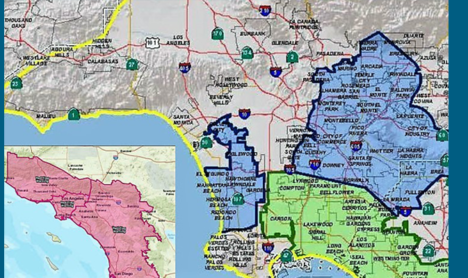
Key Questions Researched as Electricity Distribution Models and Practices Evolve
by Steve Cowell
Repeatedly, we hear about how fast the electric grid is transforming, and about how many difficult issues utilities, regulators, project developers, and other industry players must grapple with daily. Whether you engage with these issues every hour of the day or only tangentially, you know it’s necessary to keep up with what’s happening. I am pleased to announce new essential resources on non-wires alternatives (NWAs) and multi-user microgrids (MUMs). These two papers bring insight to current grid edge topics, and show how location is critically important to planning. Read More
-

Local Staying Power: EE Jobs in Rural America
by Audrey Bragg
Energy Efficiency Jobs in America shows that energy efficiency (EE) jobs drive energy employment, representing nearly 35% of all U.S. energy-sector workers. One may assume that most of these opportunities are in major cities, as rural areas offer fewer job options in general. However, certain industries create a larger number of local jobs providing employment for Americans outside metro areas. These jobs can transform people’s lives and be fulfilling careers.
EE is one of these vital industries, offering 2.25 million jobs.[i] You may not realize, but EE jobs are everywhere. In fact, 99.7% of U.S. counties have energy efficiency jobs. Yes, 3,000 out of 3,007 counties employ EE workers. Read More
-

Construction Jobs Significant in U.S. Energy Efficiency Employment
by Pat Stanton
Since early September, I have been eager to share findings from our recently released Energy Efficiency Jobs in America report. One key fact that surfaced is the importance of construction work in the energy efficiency (EE) industry. Overall, 2.25 million Americans are employed in EE. Of these workers, 1.27 million are employed in construction.*
Did you know that 1 in 6 of all United States construction workers spend 50% or more of their time on EE-related tasks? People may think that careers in efficiency are limited to changing light bulbs and installing insulation. But we’ve discovered that most EE construction work is related to installing high efficiency heating and cooling / HVAC systems. Read More
-

Veterans Rock Energy Efficiency Jobs
by Pat Stanton
Every workday, 2.25 million American energy efficiency professionals are on the job.[i] Many install insulation and advanced building controls and improve HVAC systems. Their work isn’t always recognized, but I strongly believe that it should be! For starters, energy efficiency (EE) cuts waste and costs while improving health and comfort.
NOTE: See the current version of Energy Efficiency Jobs in America for updated statistics.
Our new report, Energy Efficiency Jobs in America, offers insights about EE companies and workers. I was surprised to learn that although only six percent of the U.S. workforce are veterans, eleven percent of energy efficiency workers are veterans. Read More
-

Staying Cool with the NSPM: States Wade into Deeper Waters
by Julie Michals
It’s been over a year since NESP published the groundbreaking National Standard Practice Manual (NSPM). After months of ongoing state outreach to build understanding of the NSPM, stakeholder interest is intensifying. Some jurisdictions are “dipping their toes in,” while others are venturing from shallow to deeper waters. New developments in NSPM awareness and application show states taking the NSPM from theory to practice around the country. Read More
-

Taking Stock: NSPM Makes Quiet Inroads
by Julie Michals
The year 2017 will likely be remembered as an exciting one for our U.S. electricity industry. Developing technological advances, innovations, and emerging opportunities — largely in the distributed energy area – plus tackling regulatory barriers and testing new policies, programs, rate designs, are among the year’s headlines. Add the federal energy regulatory/political frenzy (aka FERC NOPR), and 2017 became a whirlwind of change and challenges.
Read More -

Pollinating a Framework for Cost-Effectiveness Testing
by Julie Michals
Bees and pollination have been on my mind lately. Summer months bring the enjoyment of sampling honey at the local farmers’ market, but more importantly, I’ve learned new things about bees from my daughter’s recent robotics team project — specifically, how much bees matter to humans and how their vitality is at issue.* As I observe bees moving from plant to plant in my garden, their process reminds me of the pollination we humans practice with sharing information. I’ve been in the thick of such a process for a few months, spreading the word about the recently published National Standard Practice Manual (NSPM).
Read More -

A New Lens for Assessing Cost-Effectiveness
by Julie Michals
The issue of determining the cost-effectiveness of energy efficiency resources has long been a complicated and sometimes contentious topic. Despite the perception that virtually all states nominally use some version of the tests identified decades ago by California, actual practice has been inconsistent and often subject to debate.
Read More -

Clean Energy in Today’s Political Climate: Businesses Double Down
by Rachel Ehrman
The mood in the room was one of fierce determination.
“It’s not a matter of politics…it’s about economics and humanity,” Mindy Lubber’s opening remarks drew a standing ovation from 600+ Ceres Conference attendees – from Fortune 500 companies and investors to U.S. non-profit organizations. As I rose from my seat in the room, I knew it was clear that I was among
Read More -
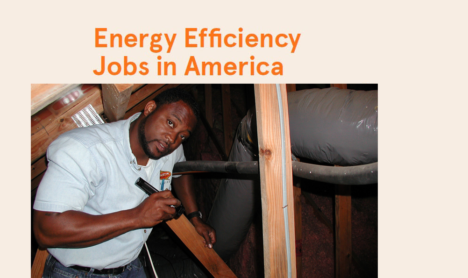
Energy Efficiency Jobs Matter to U.S.
by Steve Cowell
In 2016 we learned that energy efficiency is even more powerful than we thought. Beyond its use as a proven wise investment for cutting waste and saving dollars, the industry supports 1.9 million U.S. jobs—by far the largest sector in the U.S. clean energy economy. Our new report articulates the scale and scope of these jobs.
-

Health Benefits of Residential Energy Efficiency
by Julie Michals
E4TheFuture recently commissioned Tohn Environmental Strategies to perform a review and analysis of recent literature documenting residential building energy efficiency-related health impacts. Ellen Tohn’s research team* surveyed 25 studies that relate specifically to energy efficiency (EE) improvements. We will soon share these detailed results.
Recent Articles
- Once Upon an Energy Efficiency Conversation: Using Storytelling to Talk About Energy Policy
- Navigating Uncertainty: Staying Motivated and Inspired by the Growth of Energy Work
- Election Rhetoric vs. Reality: Pennsylvania’s Clean Energy Vision
- Carrying Our Weight: Shared Wisdom for Backpacking & Energy Efficiency
- The Human Element: Bringing Trauma Informed Practices to Clean Energy Policy